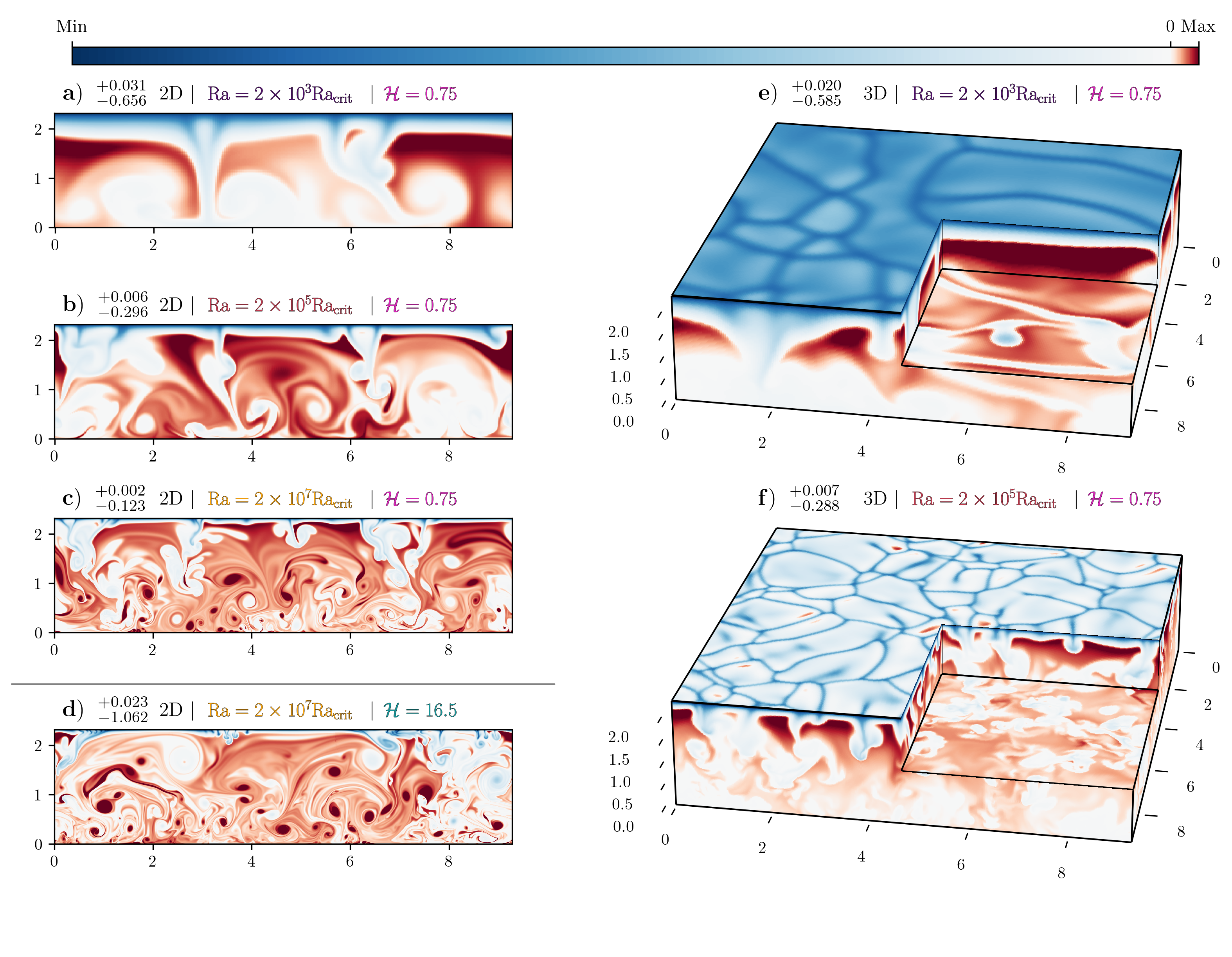Research
Overview
My research focuses on the properties of convection in the Sun, other stars, and gas giant planets. I have studied the basic properties of an internally heated convection model that better captures how convection is driven in real astrophysical settings than a boundary driven convection model. I will to use an internally heated convection model to study the properties of rotating convection to investigate whether rotating convection can explain the discrepancy between observations and simulations of large scale convective motions in the Sun, referred to as the Solar Convective Conundrum. I am also interested in studying how rotating can effect chemistry and clouds in gas giant planets. Below you can find a more detailed description of my projects.
Fully Compressible Internally Heated Convection
When constructing a convection simulation we must choose how to drive convective motions. One commonly used method is by controlling the thermal boundary conditions to enforce a superadiabatic stratification. While this method can produce a variety of convective behaviors and is relatively simple to implement, it does not realistically capture the way in which convection in stars and giant planets is typically driven. In stars and giant planets, ways in which convection can be driven include heating from nuclear burning, changes in radiative conductivity, and latent heat of formation. These processes heat a fluid across large regions where there usually are not clear boundaries. In these cases an internal heat source is a better model of how convection is driven. Internally heated convection has been studied in depth for incompressible fluids, but there has been less study of this system’s fundamental properties in a fully compressible, stratified fluid. We studied the properties of an internally heated, fully compressible fluid with a constant and uniform internal heating and found that this system can decouple Mach number (flow speed) and Reynolds number (turbulence) in 2D. We do not find this s behavior in 3D but our results suggest that this should be possible through the use of internal heating and cooling layers. 
